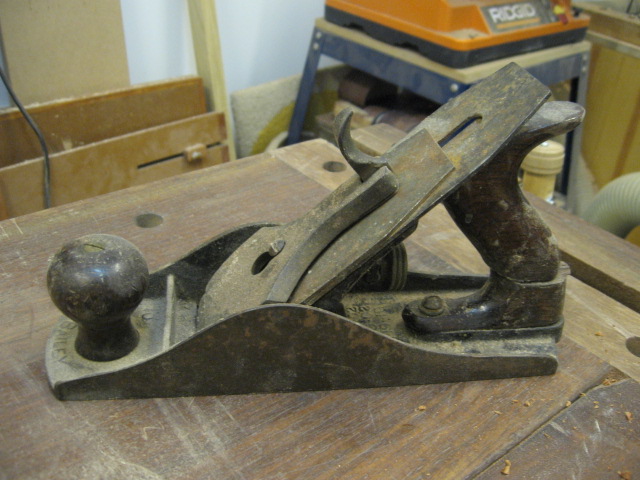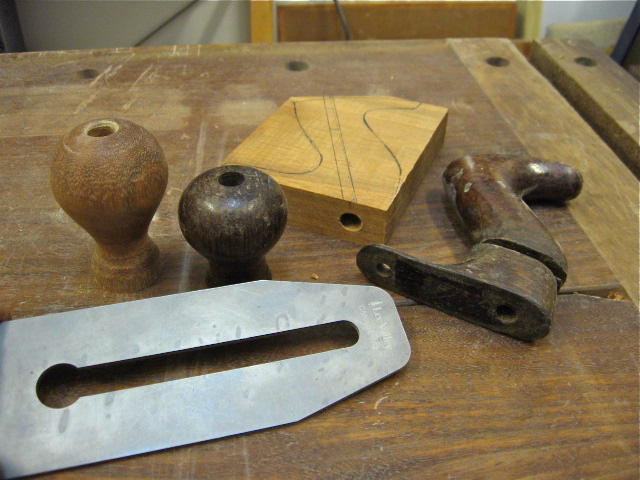Woodworkers and musicians have a couple of common fetishes: stuff that's old, and stuff that's cheap. Luthiers of course get a double dose of that impulse. So imagine my joy when I was given this five dollar garage-sale special:
This is not just some rusty old handplane; according to Patrick Leach's "Stanley Blood and Gore" (the best reference for old Stanley/Bailey bench planes) this is an authentic Bailey #4½ made between 1902 and 1920.
Despite its age, there is only superficial rust, and amazingly all the parts are there. After disassembly, the first thing to do was to clean off all the dirt and rust. Here I'm scouring off the sole using an extra-fine brass wire wheel in the drill press:
Works like a charm! The castings are all very precisely-made and fine-grained, and the lever cap is even nickel-plated. Even the black paint is still glossy under the dust. The original blade, however, is rather thin steel, and it had enough rust pitting that I decided to replace it with an A2 blade from Lee Valley. The original tote was broken pretty badly, and obviously glued back together misaligned, before subsequently being broken again. I decided to replace both the tote and knob.
Notice that I made my own knob much taller than the original. The short knob is a design flaw with these old planes that makes them uncomfortable to use. It was corrected around 1920- that's how I know mine is older than that. I made the new ones of Jatoba, which is not quite so beautiful or pleasant to touch as the original rosewood but quite a bit cheaper and tougher. This is after all going to be a working tool, not a showhorse.
There were a couple of details that needed attending to in order for the plane to work to its ultimate potential. The mouth needed a very slight widening to accomodate the thicker modern blade. Some judicious filing ensured that the frog seated perfectly in the body. Most importantly, to work properly, it needs a flat sole. This plane had obviously been used a fair bit, but had never had the sole lapped. After assembling to put the correct tension on the casting, I stuck some PSA-backed sandpaper to a flat granite slab, and rubbed in a figure-8 pattern until it was done.
All done, and much better than new! Considering the time it took to resurrect this old workhorse, I probably could have just gone and got myself a new Veritas bevel-up smoother that would work at least as well. But what would be the fun in that?





